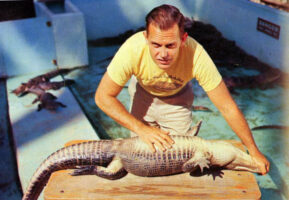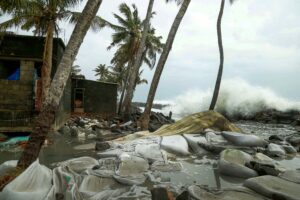Support Hidden Compass
Our articles are crafted by humans (not generative AI). Support Team Human with a contribution!
This story has been published in the 2024 Pathfinder Issue of Hidden Compass. While every story has a single byline, storyteller proceeds from patronage campaigns in this issue will go collectively to Team Beyond the False Summit on top of their article pay.
In a Hidden Compass first, we’re running a three-part series of articles by a single author: expedition leader Lance Garland. This is the first in the series. The expedition continues in Part Two, “Escaping the Trap,” and Part Three, “Connecting Beyond the False Summit.”
Twisting and turning, I fly down a steep glacier somewhere around 8,500 feet elevation in the European Alps. Unable to strike my axe into the ice, I force my body onto my stomach, but the momentum twists me upside down onto my back. Sliding headfirst down the mountain directly toward a large pile of boulders below, I realize that if I don’t stop, this fall could kill me. My helmet will easily break with this speed.
If I let go of my axe, there will be no hope. Each time I try to strike it into the ice, it weakens what little grip I have left. After all I’ve been through to get here, I don’t have much strength left, but I tell myself I have no other option. I must strike the pick of my axe into the snow to stop my fall — and I must do it now.
~~
They had come up against forces they could not withstand, much less fathom, so far removed from any possibility of rescue.
In the aftermath, on July 26, 2024, our climbing team — professional climber Jordan Cannon, high-altitude doctor Valentine Fabre, photographer and mountain guide Ben Tibbetts, and I — along with my husband, Oliver, and sister-in-law, Heather, go for a leisurely hike above the Swiss town of Zermatt. We’ve taken a gondola up to these sun-drenched alpine meadows, where we hike toward an iconic lake, Stellisee, that reflects the pointed peak of the Matterhorn with a streak of cloud that looks like a sassy hair flip. The image echoes in Jordan: His tall frame skips along the trail as his dark, curly hair jounces along, and he cheekily kicks over cairns. We laugh and discuss that these piles of rocks are for route-finding in the mountains, not aimless ornaments.
As we hike, we talk about the goal of our expedition, “Beyond the False Summit:” to unearth an obscure part of climbing history in the early 1900s. When I first pitched this project about the queer pioneers of alpinism, I used the term because only one of the men we were researching could be considered exclusively gay — the other two were difficult to label. Queer is a word with an evolving meaning, so I’ll try to be more specific: Our project centers on three men who exhibited same-sex attraction, representing hidden diversity in a time of exclusivity in climbing and the culture at large.
As a military veteran, career firefighter, and someone who’s climbed as a pastime these last eight years, I’ve mostly been the only known gay guy around. Creating this project sparked my imagination and gave me something to reach for — a type of connection I’ve longed to find in history and the present. With Jordan on the team, one of the first openly gay professional climbers, I felt connected, for the first time, to the gay athlete community.
I first got to know him intimately while working on a profile of his life for Climbing Magazine that ran in the early summer of 2024, focused on his second ascent of the Cowboy Direct route on Trango Tower in Pakistan. It’s a feat that inspired me, not only for the elite level of his climbing but also for what I see as his fearlessness in traveling to a country where it is illegal to be gay.
As we walk well-worn paths with fields of yellow wildflowers on either side, Ben asks, “How are you going to include all this research in a few essays? That sounds impossible.”
“I’ll need to write a book,” I say, and we laugh, “but mostly, I’m just exploring if the gay experience can be felt by other people. How is any of this universal?”
We hike and ponder the concept, wondering how any parts of our personal perspectives and identities align with people who are different from us.
~~
In 1925, Richard Halliburton released his debut book, The Royal Road to Romance, a memoir that documented his post-collegiate travels across the world — from 1921-1923 — as he rejected a traditional career path in favor of forays through North Africa, Asia, and Europe. It was an instant success. Two years later, he published The Glorious Adventure, which retraced Homer’s The Odyssey across the Mediterranean, and two years after that, he published another book, New Worlds to Conquer, which chronicled his famous swim of the Panama Canal.
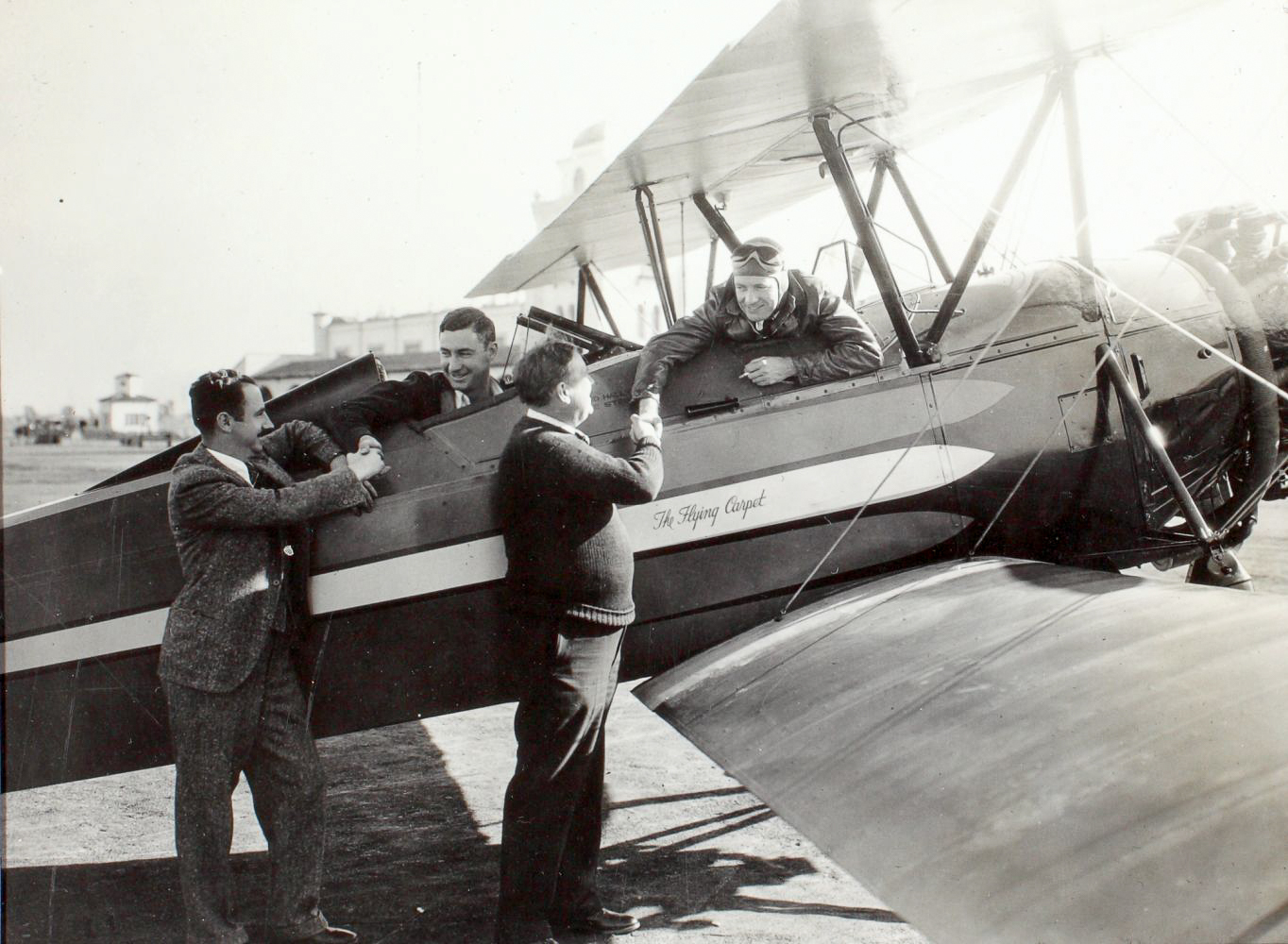
Richard Halliburton sits in the front cockpit of his Stearman airplane, “The Flying Carpet,” while aviator Moye Stephens sits in the aft cockpit. In the early 1930s, Halliburton and Stephens flew around the world in the pictured aircraft, inspiring Halliburton’s 1932 best-seller, The Flying Carpet. Photo: Frank S. Luqueer / San Diego Air and Space Museum Archives.
With penetrating blue eyes and the self-possessed expression of a movie star, Halliburton traveled the globe, searching for more provocative stunts to hold the interest of a culture that worshiped the exploits of explorers like Amelia Earhart and Charles Lindbergh. With a steady stream of adventure books set around the globe, he captured the imagination of the public. Behind that glossy façade, he lived as a gay man.
As a recent graduate of Princeton in 1921, Halliburton set out to climb the Matterhorn, a 14,692-foot pinnacle of stone. From basecamp at the Hörnli Hut, he and his team began their one-day ascent. In their hours-long slog toward the summit, the air was bitingly cold from the clear night sky. At various crux points, the guides had to help them up. In an exhausted delirium, they climbed and enjoyed none of it until Halliburton looked up, and one of their guides said, “We’re here … I congratulate you.”
Having reached the summit, they were rewarded with a view of the mountains across three countries — Italy, France, and Switzerland — spread out below and around them in layers of ridges. Halliburton pulled out his small notebook that flapped in the wind, turned to protect the pages, and began writing the first few lines of this adventure where he described a view “which overlooked the sea of glaciers stretching like fingers in five directions from the summit of Monte Rosa, glistening in the sunset, to the winding narrowing wrist, two thousand feet below, from which an icy torrent roared on down the valley.”
I wanted to retrace Halliburton’s steps, write a few lines of my own on the summit of such a world-famous mountain, and feel for the first time like I had an inheritance in history from a gay man like me.
~~
On July 23, during our endlessly dark descent, Jordan said to me, “Gay guys do hard things, and then we recover.” By that point, I was delirious: severely dehydrated, in pain, and barely capable of getting myself off the mountain. So, when we arrived back in Zermatt, we decided to have a recovery day. It helped: Slowly, I’m regaining my appetite, though I’m still somewhat nauseated, my throat burning from all the vomit.
The sun begins its descent behind us and bathes the Matterhorn with amber light … but now the Matterhorn seems forlorn, partially hidden behind a screen of clouds, out of reach.
This project has been no stranger to challenges, and as the expedition leader, the weight of these challenges has often fallen on my shoulders. After winning the 2024 Pathfinder Prize from Hidden Compass, two of the original members of our team had to back out for personal reasons. So, ultimately, the stakeholders of our project ended up being Jordan Cannon and me.
We had to find a new photographer, so we hired Ben Tibbetts, a world-class climbing photographer and mountain guide with some 20 years of experience. A British expat based out of Chamonix, France, Ben is fluent in English and French, which was a huge benefit since neither Jordan nor I speak French. At first, I was a bit shocked Ben had signed on to the project: His work is well-known among climbers, and our project felt small for someone of his stature. But he was keen to climb with Jordan and was something of an aficionado of one of the historical figures we were researching for our project, so he signed on for the mission. He would bring his girlfriend, Valentine Fabre, as his “rope gun” (the lead climber who places protection) so he could focus on taking pictures while hanging off the side of a mountain.
~~
On the day of our recovery hike, Ben and Valentine come to the loft in Zermatt. They ask me how I’m doing, and I tell them, “It’s been rough. I can’t quite nail down what went wrong.”
Valentine replies, “That’s happened to me before. I think it’s a mixture of things like electrolyte imbalance, dehydration, altitude sickness, exertion.”
As an endurance athlete who placed third in the 2008 ski mountaineering world championships, Valentine’s empathy means a great deal to me. Becoming animated for the first time since I’ve met her, she goes on to tell me about her attempt with Hillary Girardi to become the first women to ski the Haute Route from Chamonix to Zermatt — a staggering 26,000-foot ascent over 62 miles nonstop.
“I was puking by the end of it. Ben was making fun of me,” she says.
The Haute Route project was not only about making history as a female team, but also paying homage to Valentine’s late husband, Laurent Fabre, who had set the men’s speed record of skiing the Haute Route in 2010, finishing in 20 hours and 28 minutes. He died tragically in 2012 from a training accident while teaching a climbing course in the Mont Blanc massif.
The short film, “The Traverse,” co-directed by Ben, chronicles Valentine and Hillary completing the Haute Route in 2021, becoming the first female team to do so, and setting the women’s speed record of 26 hours and 21 minutes.
With a tone of admiration, Valentine tells us that her teammate Hillary pushed her boundaries and inspired her to go further. Their presence together in a male-dominated industry mirrors the heart of Beyond the False Summit. For me, the symbol of the false summit is similar to the glass ceiling, an attempt to push past the limitations that outside forces have set upon our lives. She goes on to tell us that she’s often the only woman in the mountains: “There’s just not that many of us.”

Physician and competitive adventure athlete Valentine Fabre, who specializes in high altitude medicine, was an invaluable member of the climbing team. She was also the only team member who had previously climbed the team’s route. Photo: Ben Tibbetts.
Ben gives me a copy of his photography book, which he meticulously created and published himself. I flip through the pages, stopping on an image of the Matterhorn, and say, “I admire your dedication to self-publishing. I know how hard it is to put something like this together.”
He’s inches shorter than my 6-foot 3-inch frame, with the demeanor of a mountain man — unshaven, with unkempt hair left wild in the wind. For the first time since I’ve met him, Ben’s professional persona softens, and I get a glimmer of what it must be like to be in confidence with him, his passionate and almost sensitive qualities on display.
Reciprocating his gift, I give them water bottles and t-shirts with our project logo on them, and cards that say, “I’ve got your pack.” It feels like a conclusion, but we have one more task to complete together.
~~
Creating this project sparked my imagination and gave me something to reach for — a type of connection I’ve longed to find in history and the present.
For his work in publishing, Halliburton was regularly in New York City, where the atmosphere was eddying with homosexual opportunity. Gerry Max’s biography of Halliburton, Horizon Chasers, illustrates that while it was illegal to be gay in New York during the 1920s — police officers regularly conducted sting operations and raided bars suspected of homosexual activity — there was a vibrant gay scene of private parties kept secure by codes and gatekeepers.
Max’s book is not only a biography of Halliburton but also another man, Paul Mooney, who was working as a travel writer in New York City at the time. Mooney harbored no shame for his sexuality, and despite the dangers of his time, his family was supportive. A man with a gentle handsomeness and a clean-cut persona, Mooney surrounded himself with like-minded individuals, becoming a part of gay society from an early age. Yet, for all his self-acceptance and openness, he still had to obscure a whole swath of his life from public view. It was in this environment of secrecy that he met Halliburton. Max claims they crossed paths in New York City in the late 1920s, although there is no record of their actual meeting. What we do know is that in 1927, Paul published his first and only collection of poetry, Seven Poems, in which he wrote a poem that Max believes is about Halliburton entitled, “Blondel to Richard Couer de Lion.”
The first record of their connection was in 1930, in a picture together in California with a group of aviators standing on a tarmac in front of a biplane. That year, Halliburton wrote a note to Mooney inside the front cover of his book, The Glorious Adventure, “For Paul — lest he forget.” No matter the vagueness of their early connection, they would soon become inseparable.
After spending most of his twenties traveling relentlessly, Halliburton moved to California, where he and Mooney lived together. They rented a cottage on the beach in Laguna before building a house of their own on a cliff overlooking the Pacific.
Max claims Mooney edited and co-wrote The Flying Carpet with Halliburton. Although Halliburton was already a household name, their collaboration cemented the Halliburton brand of adventure writing, but it had to be obscured from the public. Max’s biography reports that not only was Mooney the ghostwriter, but he was also Halliburton’s best friend and lover. They traveled together to meet each other’s families, and while they could be open with Mooney’s family, they maintained a shroud of heterosexuality to Halliburton’s parents. In this moment, for an adventurous gay man like me, finding Halliburton and Mooney’s love story, along with Halliburton’s contributions to climbing and travel history, makes me feel profoundly less alone in time.
~~
Our climbing crew hikes from the Stellisee back to the gondola and down to Zermatt to have dinner on a balcony as the sun begins its descent behind us and bathes the Matterhorn with amber light. The plan was to have a celebratory dinner after completing our objective, but now the Matterhorn seems forlorn, partially hidden behind a screen of clouds, out of reach.
Ben says, “Look at that beautiful mountain.”
“The mountain we didn’t climb,” Jordan states.
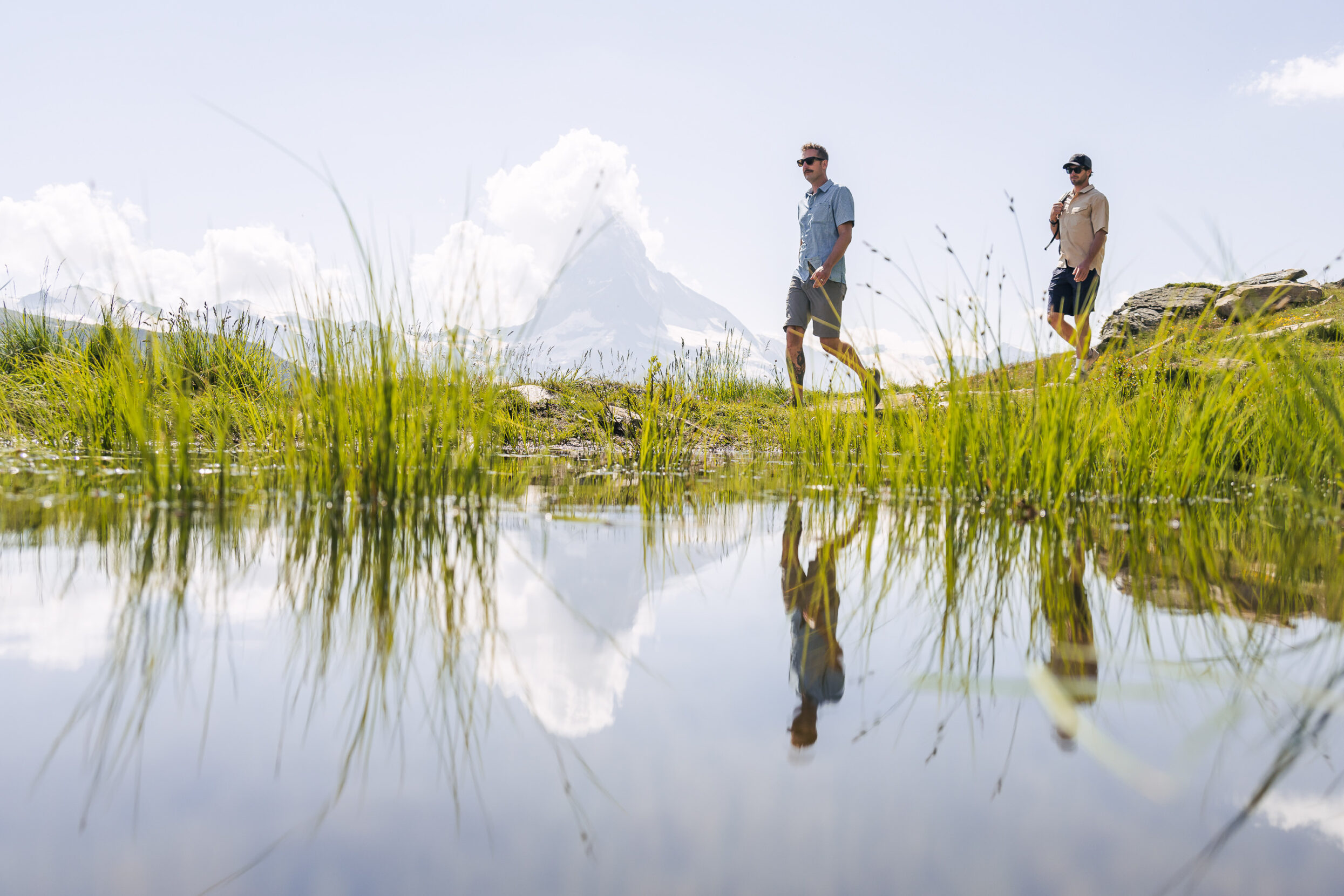
Lance and Jordan walk along Stellisee lake. In the distance, the Matterhorn rises. Photo: Ben Tibbetts.
A bit more than a week before my arrival in Europe, the weather forecast was inclement, so I checked in with Ben about the conditions for our climb. He wrote back, “With a massive storm rolling through and the snow line forecast down to 3200 at that time[,] the Matterhorn is pretty much off the table.” On our team phone call before my departure, Ben said that only two teams had summited this year, and they were highly skilled individuals. It wouldn’t be worth the risk for us to attempt the Matterhorn, so we prepared to pivot to a different peak instead, though we still held out hope things would change — that we’d get to attempt the Matterhorn after all.
But the Matterhorn attempt never came: Our original plan was to climb a route that is seldom climbed, called the Zmutt, which was off limits because one of the hardest pitches was covered in verglas, a coating of ice over a rock face. So we decided to climb another mountain, an Alps classic, one that is perhaps even more deeply connected to our queer history.
Immediately after eating, Ben and Valentine leave to catch the train. They have a two-hour drive back home to Chamonix. This is goodbye. We’re ending on a solemn note, and there is no evading it.
Jordan and I spend our final night with my husband, Oliver, and his sister, Heather, watching one of Jordan’s favorite movie characters in Indiana Jones and the Dial of Destiny. His love for Indy is contagious. He pauses the movie – tears frozen in Indiana’s eyes – as Jordan tells us that Indiana Jones is actually discussing his son’s death without stating so explicitly. There is an earnest quality to Jordan, much like Indy on the screen, and I can’t help but draw the correlation from Jordan to Halliburton, who was more recently referred to as the “gay Indiana Jones.”
~~
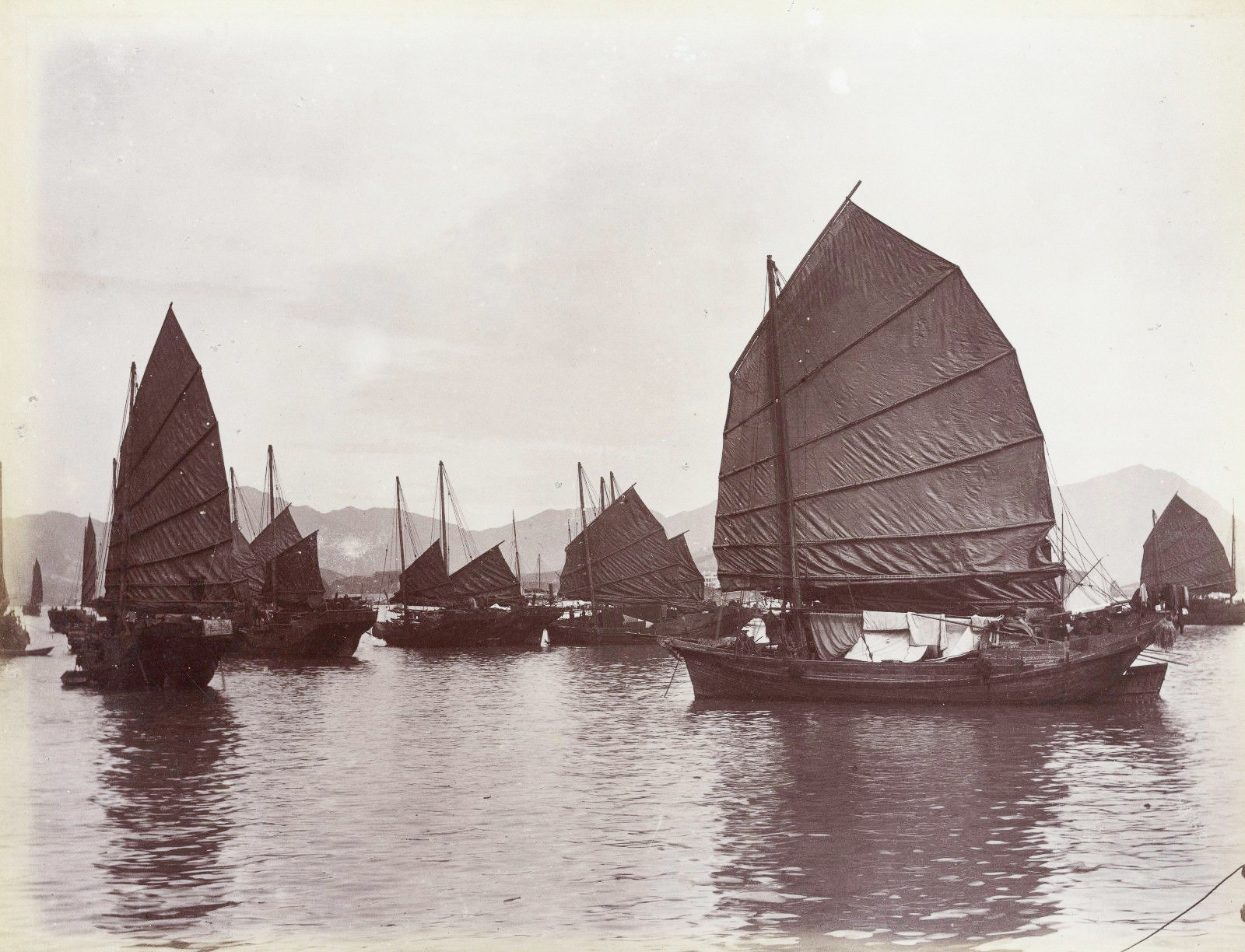
Traditional Chinese junk boats in the waters off Guangzhou, China, circa 1880. Photo: Lai Afong.
For his next adventure, Halliburton concocted a magnificent plan. The 1939 Golden Gate International Exposition hosted in San Francisco inspired his fascinating dream of crossing the high seas on a Chinese junk — a traditional style of sailing ship — for a grand arrival at the fair. But something had changed in Halliburton. No longer happy to travel the world alone, he asked Mooney to come with him on this grand adventure. Mooney accepted.
Max describes massive obstacles in their way: timeline and labor issues and an initial failed attempt at sea where the hull was not watertight. Despite every indication that they should not try to cross the Pacific on a boat riddled with issues, Halliburton and Mooney left Hong Kong to sail for San Francisco on a ship called the Sea Dragon.
On the night of March 23, 1939, gale-force winds swept into the region about 1,600 miles west of Midway Island. Over the next three days, waves built to heights of 40 to 50 feet, dwarfing the small sailing vessel amidst the menacing darkness surrounding them. The winds screamed violently, whipping the surface of the sea into disintegrating foam, blinding the eyes, and tearing away any loose object. Equilibrium was gone. They had come up against forces they could not withstand, much less fathom, so far removed from any possibility of rescue. They were lost to the typhoon, and their only hope was that the weather would subside. A hope that didn’t come.
Sometime between the night of March 23 and the morning of the 24th, the captain of the Sea Dragon sent out one last message on the fifty-watt radio: “Southerly gales. Rain squalls. Lee rail under water. … Wet bunks. Having wonderful time. Wish you were here instead of me.”
They were sinking. There would be no rescue. The Sea Dragon and her crew were never found.
~~
“How is any of this universal?”
Best-laid plans aren’t always enough to keep up with the ever-shifting momentum of outside forces. Unlike the way Halliburton died, by holding on to his ideal and not pivoting to other options, we refused to be blinded by a goal that would compromise our safety. In the ability to pivot, we found a climb with deeper roots to our community but also a route far more technically difficult than the Matterhorn.
In Mooney’s 1927 poem “Blondel to Richard Coeur de Lion” he writes, “Be brave awhile — no prison forge weld / Bonds strong to hold as our love’s bond has held!” It was their love affair that brought our team here in the first place, and it was their example that inspired me to be open to change course. The Matterhorn would stand as the lighthouse that guided us here. A different peak would now be our ensign, one intricately connected to two other queer pioneers of alpinism and the story of my marriage.
The expedition continues with Part Two: “Escaping the Trap.”
Lance Garland
Lance Garland is a 2024 Pathfinder Prize winner and expedition leader for “Beyond the False Summit: A Matterhorn Expedition to Unearth the Queer Pioneers of Alpinism.” In the moments between fighting fires, climbing mountains, and sailing seas, he writes.


